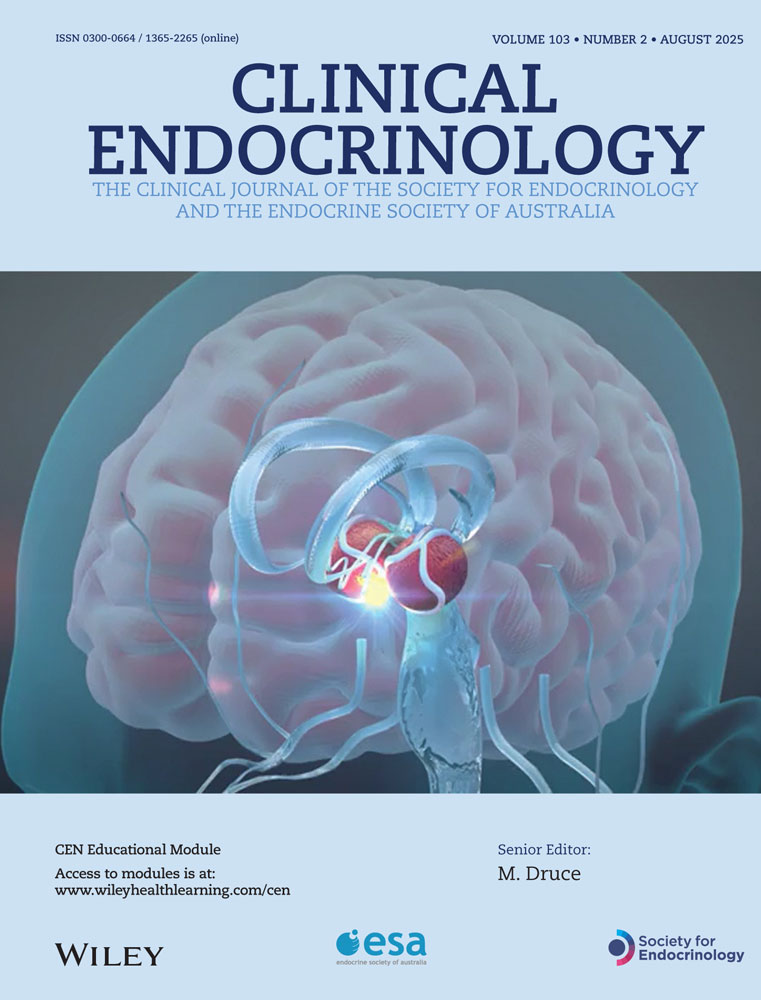Serum growth hormone (GH) binding protein, IGF-I and IGFBP-3 in patients with β-thalassaemia major and the effect of GH treatment
Abstract
OBJECTIVE
Levels of IGFI have been shown to be low in transfusion-dependent thalassaemia and there is preliminary evidence to suggest that this may be reversed by GH treatment. In this further study we have evaluated serum growth hormone (GH) binding protein (GHBP), IGF-I and IGFBP-3 in patients with β-thalassaemia major and the effects of GH treatment on these various parameters.
PATIENTS
Fifty-six transfusion dependent patients with β-thalassaemia major without GH deficiency between 2 and 20 years of age were studied. Thirteen non-GH deficient patients with heights of −1.5 SD or more were treated with GH at a dose of 0.14 IU/kg/day subcutaneously for 1 year.
MEASUREMENTS
Serum GHBP, IGF-I and IGFBP-3 were measured in all the patients. In the 13 patients treated with GH, these serum parameters were measured before and after 3, 6 and 12 months of treatment.
RESULTS
The mean serum GHBP concentrations were normal in both prepubertal and pubertal children but the serum IGF-I and IGFBP-3 concentrations were low throughout childhood and adolescence. There was a significant correlation between serum IGF-I and IGFBP-3 concentrations (r = 0.79; P = 0.0001) but there was no correlation between the height SDS of the patients with serum GHBP, IGF-I or IGFBP-3 levels. GH treatment in the 13 patients resulted in significant growth acceleration associated with a significant rise in the serum IGF-I and IGFBP-3 and a significant fall in serum GHBP concentrations.
CONCLUSIONS
The low serum concentrations of IGF-I and IGFBP-3 in the presence of normal GH reserve and serum GHBP concentrations in patients with β-thalassaemia suggest a state of partial GH insensitivity at the post-receptor level. This partial GH insensitivity state can be overcome by supraphysiological doses of exogenous GH. The lack of correlation of IGF-I, IGFBP-3 and GHBP with height SDS of the patients imply that the growth failure commonly observed in patients with β-thalassaemia major may not be specifically related to dysregulation of the GH–IGF-I axis. GH therapy resulted in significant increase in serum IGF-I and IGFBP-3 but a significant fall in GHBP.




